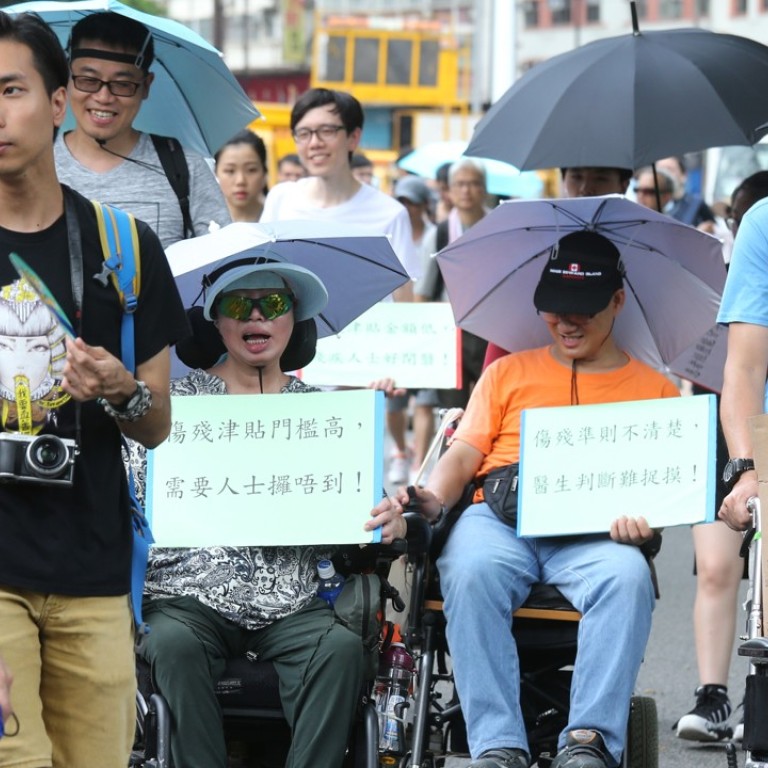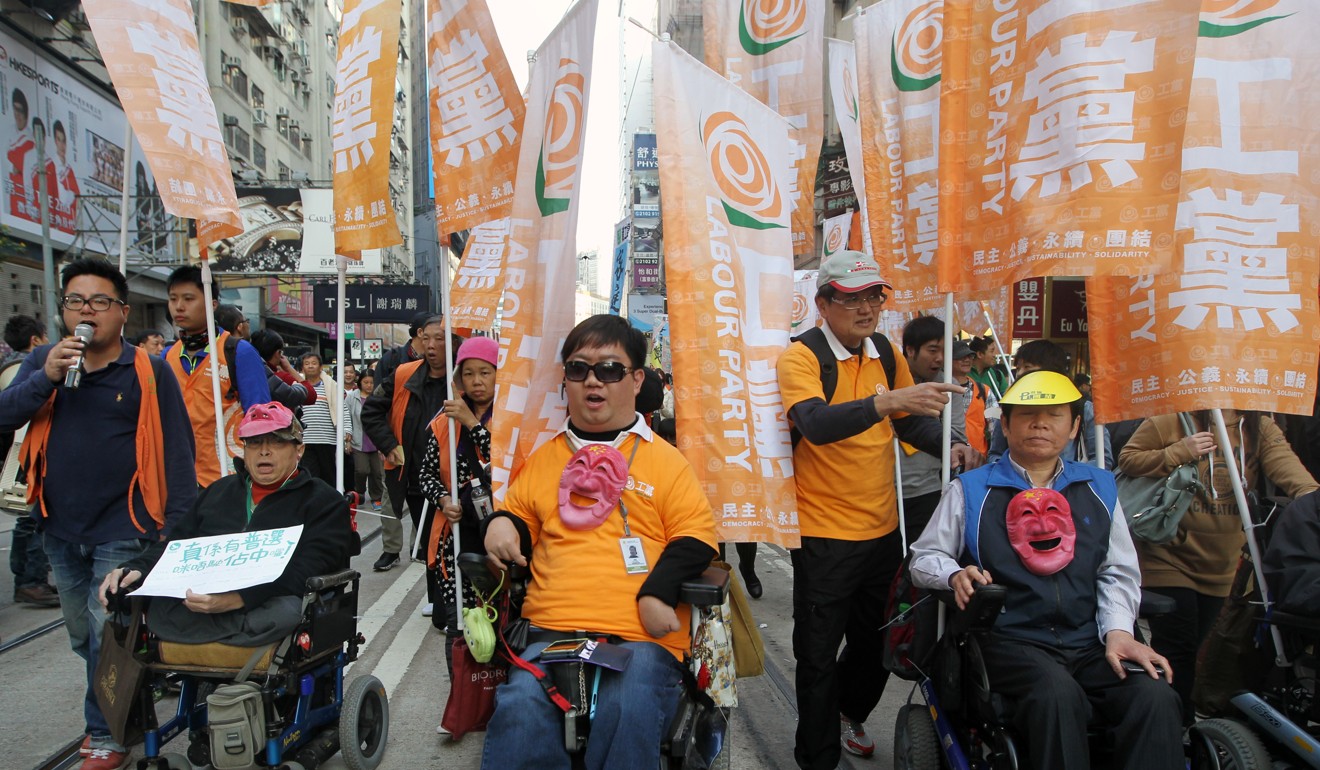
Unemployment rate for disabled people in Hong Kong eight times higher than official figure, survey finds
Six welfare groups call for more government support after more than half in poll claim exiting policies contribute little or nothing to their job searches
The official unemployment rate for Hong Kong’s disabled population does not reflect reality, social welfare groups complained as a survey carried out by an employment network for the disabled found 48 per cent of such individuals were jobless.
The finding stands in stark contrast with the 6 per cent stated by the government in its last report, which was published in 2013.
The network of six social groups called for more government support as more than half of the 337 people in the poll said existing policies contributed little or nothing to job searches. In addition, the 18 employers who were interviewed in the poll requested more information and resources as well as less red tape to help them.
Wong Yu-cheung, an associate professor of social work at Chinese University, led the survey in May and explained that the city’s official definition of unemployment excluded jobless people who were not seeking a post in the past half year.

However, in the survey, 32 per cent of unemployed disabled people did not make any job applications in the preceding six months, even though their motivation to work was described as strong. Commonly cited barriers to embarking on a search were a lack of self-confidence, suitable job openings and adequate working environment.
“Six per cent is not what I see at the front line of service,” said Martin Ting Yuen-wo, a manager with the non-profit group Hong Kong Society of Rehabilitation. Ting urged the government to boost its subsidies for employers to build universally accessible facilities for employees with special needs.
A company may receive a one-off subsidy of HK$20,000 at most for each employee with a disability. The money must go towards procuring facilitating devices and modifying the workplace.
A Social Welfare Department spokeswoman said that, starting from the year 2014/15, deserving cases could be granted up to HK$40,000 for a single assistive device priced above HK$20,000.
Katy Wong Ka-lee, a visually challenged wheelchair user, said the subsidy was insufficient.
It is not enough, especially for a small company, to make all the changes for me
“It is not enough, especially for a small company, to make all the changes for me, from making the bathroom accessible to creating sufficient passage to my desk,” she said.
Wong, who holds a higher diploma in business administration, said she had to resign her administrative assistant position last November because the entrance to her office had only stairs, and the office lacked a suitable table, chair and magnifying device.
Despite 20 applications and five interviews since leaving that job, Wong had yet to find new work.
“Some [employers] asked in the interviews what needs I have, but they had no idea what to do,” she said.
The network suggested an official one-stop service platform to better inform and educate employers.
Wong suggested the government set a target for public organisations to hire a certain percentage of disabled people. Currently, around two per cent of government employees are disabled.

